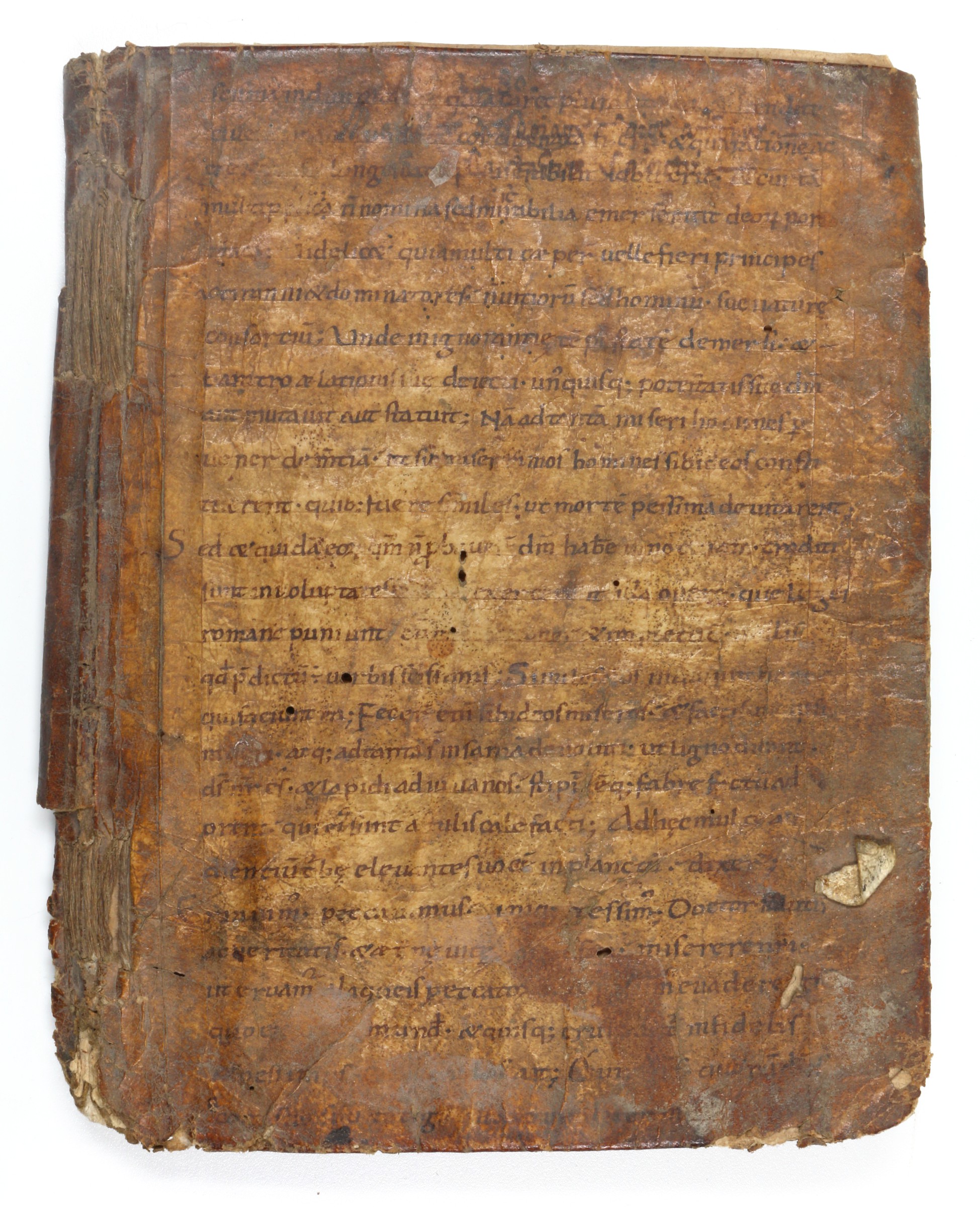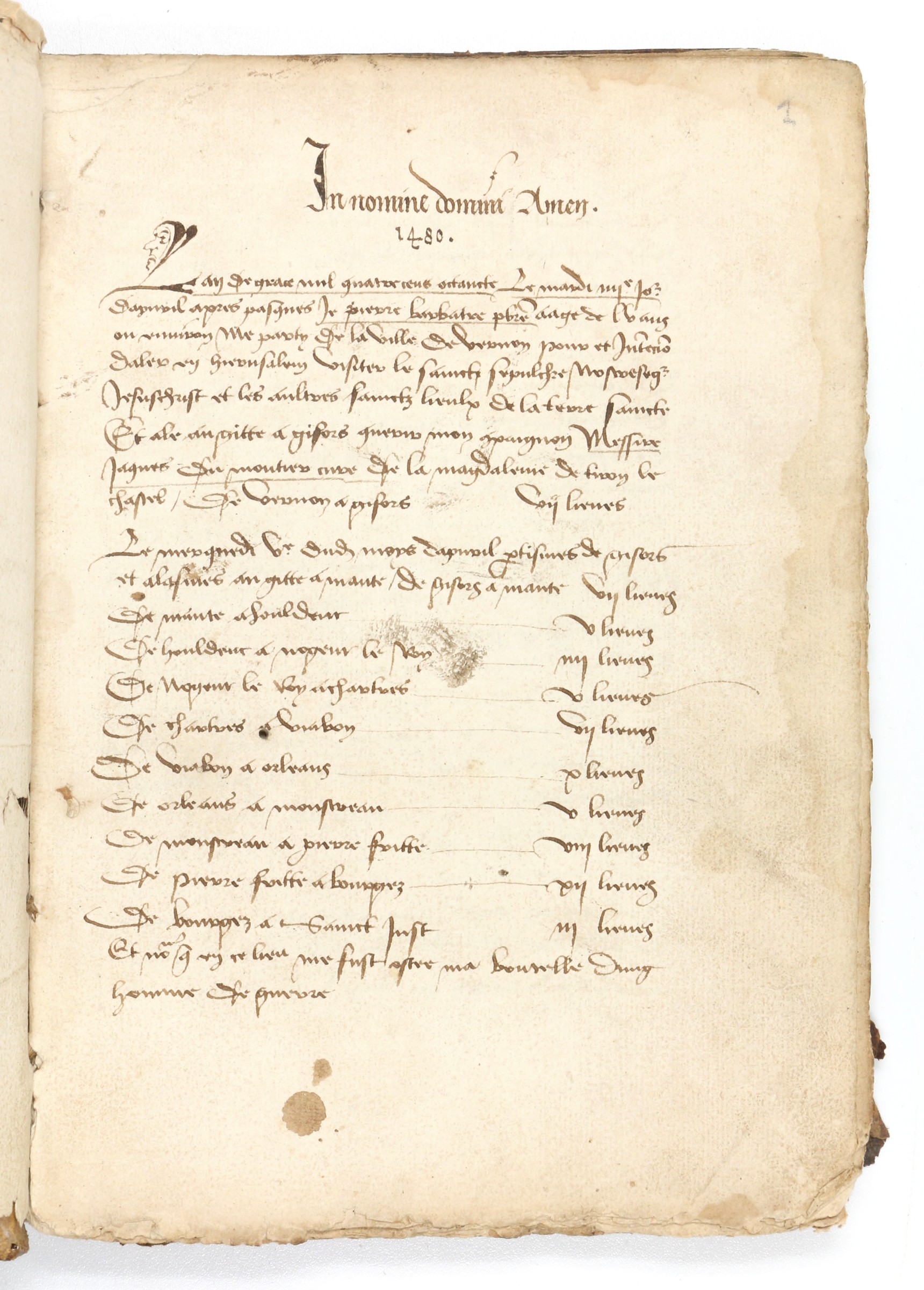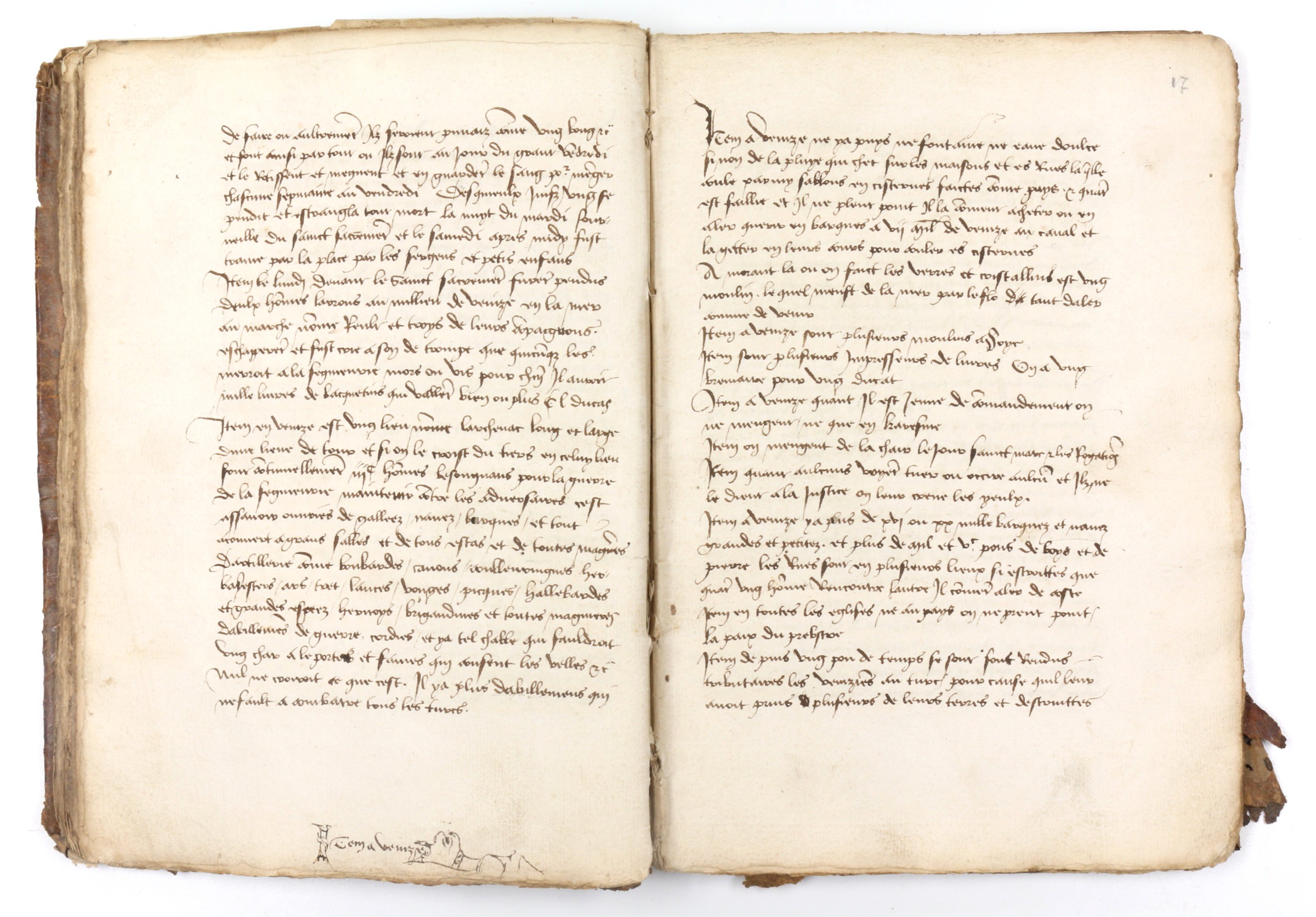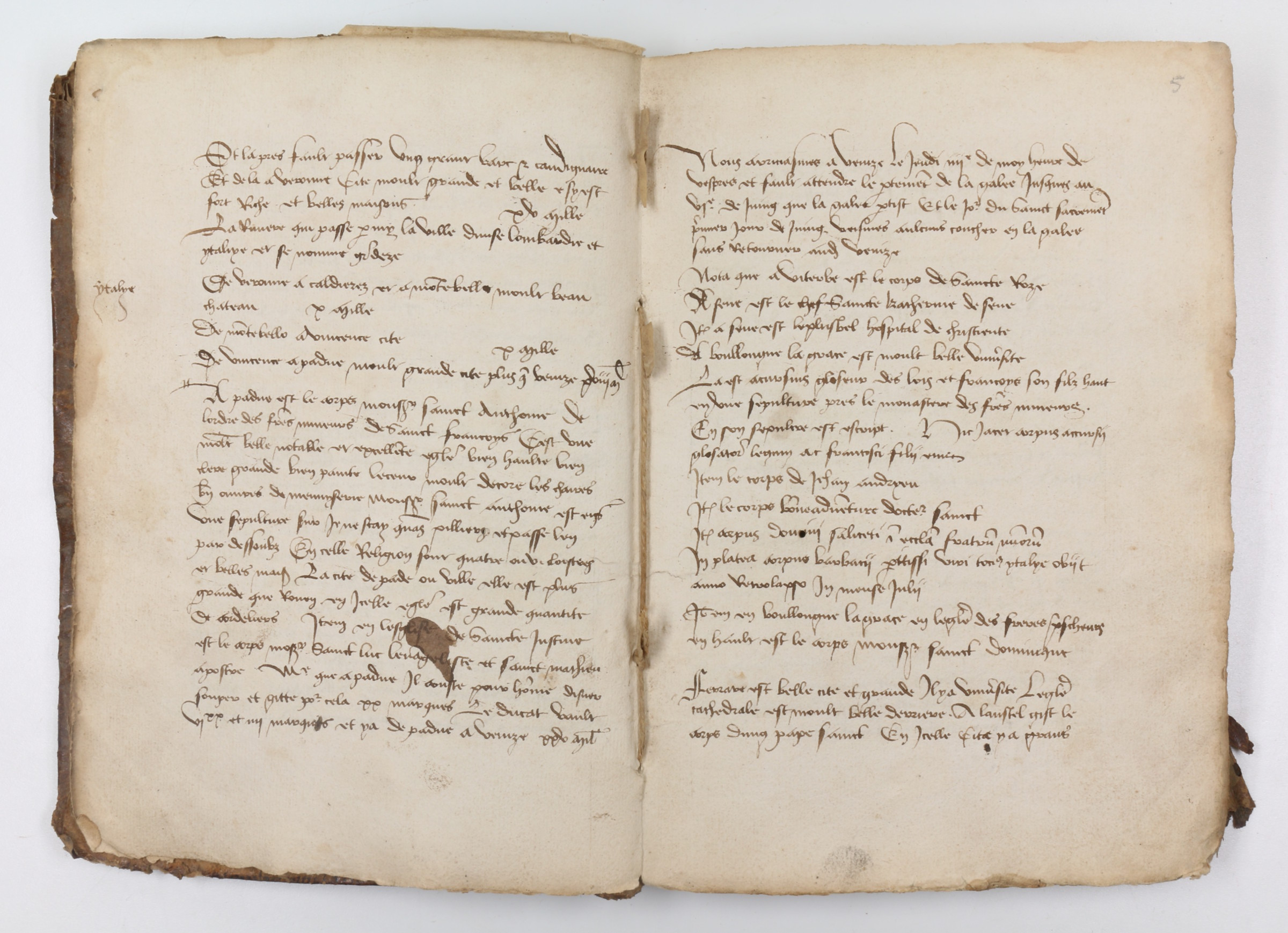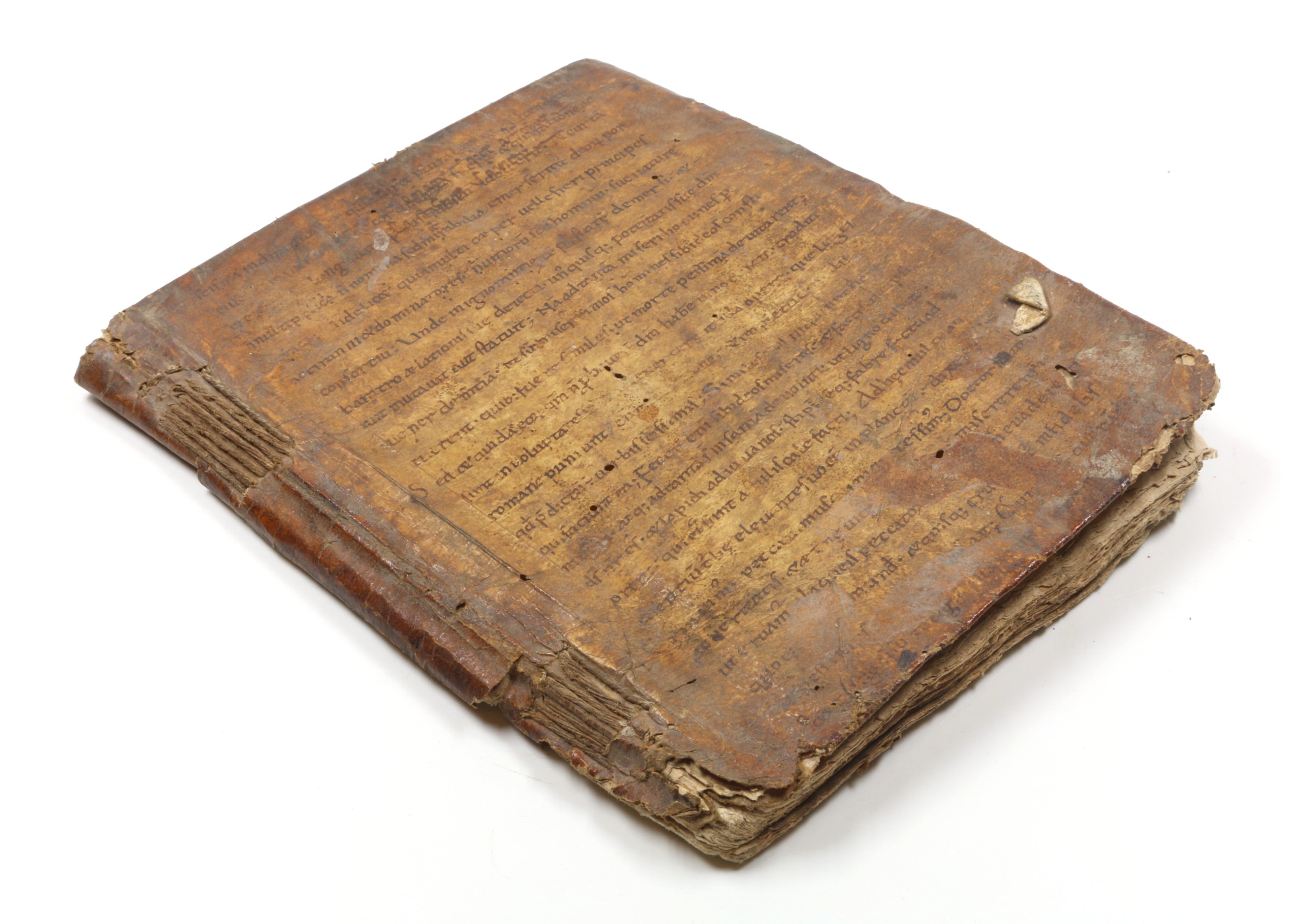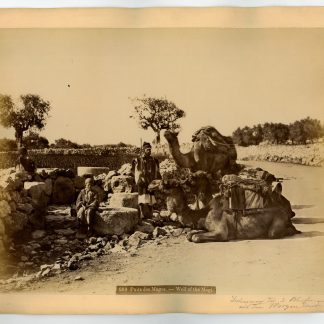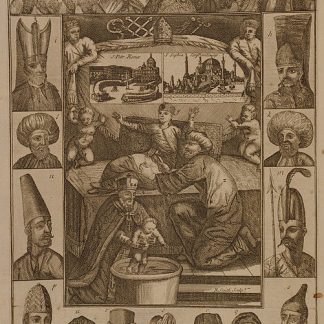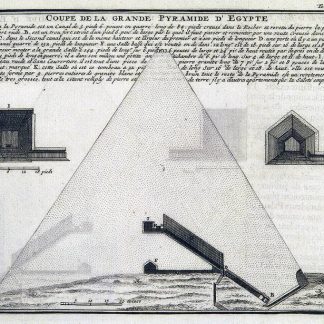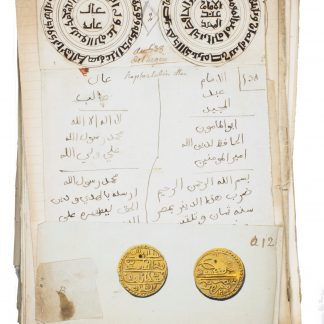[SOLD]
This item has sold. We are always interested in acquiring another copy or any item of comparable quality.
A 15th-Century Vernacular Account of a Pilgrimage to the Holy Land
Account of a Pilgrimage to Jerusalem in 1480.
4to (209 x 165 mm). Middle French decorated manuscript on paper (watermark "licorne sanglée", pointing to Normandy: similar to Briquet 10387 & 10390 - Coutances 1497 and Frene d'Archeveque, 1499). 116 pp., collation: i1, ii8, iii8, iv8, v8, vi8, vii8, viii10; complete save for loss to the lower corner of the final leaf, concerning 9 lines of text on the last page but one. Incipit: "In nomine domini Amen. 1480. L'an de grace mil quatre cens octante, le mardi IIIIe jour d'apvril apres pasques, je, Pierre Barbatre, prebstre, aagé de LV ans ou environ, me party de la ville de Vernon pour et intencion d'aler en Hierusalem visiter le sainct sepulchre Nostresegneur Jesuschrist et les aultres sainctz lieulx de la terre saincte"; explicit: "et la feusme attendans passer a Ravennes, pour tirer a Ancone a cause que avions loué une barque a Venize pour nous passer la mer jusques audit Ancone. Et nous coutoit le passage de maistre Nicole, de Sainct Omer, mon frere et moy .x. marcelins". Bound in a parchment leaf from an 11th c. codex, containing fragments of the "Passio Pauli" attributed to Pseudo-Lin and a fragment of the "Life of St Ethbin", both in Latin (lower cover poorly legible). Stored in custom-made half morocco case.
Rare document containing a first-hand vernacular account of a pilgrimage to the Holy Land in 1480, the only expedition allowed to leave Venice for Palestine in that year.
The priest Pierre Barbatre relates the story of his journey, which he begins at the age of ca. 55 years at the Norman town of Vernon on the Seine. He travels south via Chartres and Orléans, Savoy, Turin, Leghorn, Milan (where he reports on the ongoing construction of the cathedral), Brescia, Vicenza and Padua to Venice; here, he spends a month, giving details of Venetian life, including the great festivals. On 6 June 1480 he embarks on the "Contarina" - the only pilgrim galley to make the voyage to the Holy Land that year, for the Ottoman-Venetian War of 1463-1479 had led to a sharp drop in the numbers of pilgrims, and boats were strictly controlled. Only about sixty pilgrims would return from the journey. Barbatre gives accounts of the various places he visits during the voyage - especially Rhodes, which he portrays with much precision - before the ship reaches Jaffa on 24 July 1480. He describes his exhilaration at finally beholding the holy places of Palestine and visits Ramla, Jerusalem, Bethlehem and Jericho as well as the Dead Sea; his story provides much information about the relic cult, local customs and the political situation after the recent Turkish offensive.
It appears that Barbatre did not manage to return to France after his pilgrimage, for his account of the return journey ends abruptly with the embarkation for Ancona. In spite of much research having been dedicated to his text, too little is still known about its author. While the present manuscript constitutes the sole witness for Barbatre's travelogue, scholarship is lucky to possess three further accounts of this same 1480 pilgrimage by other authors: that of Sancto Brascha of Milano, chancellor to Ludovico Sforza, whose "Itinerario ... alla santissima città di Gerusalemme" was published at Milan in 1481; the account by Félix Faber (Schmidt), a Dominican from Ulm who was Barbatre's travel companion (ed. C. Hassler, Stuttgart 1843-49), and an anonymous report by a Parisian traveller, published in Paris in 1517 as "Voyage de la Saincte cyte de Hierusalem en l'an mil quatre cens quatre vingtz".
Provenance: a fair copy prepared in France, likely in Normandy, by a professional scribe after 1480, probably following the author's own notes. Rediscovered in 1972 by the French physician Dr. Lemonnier in the estate of his grandmother Henriette Rooy, née Masmoudet, whose father had been an educator at Athis-Mons (Orge) (cf. Pinzuti/Tucoo-Chala [1973], p. 8). Previously in a collection owned by the Duguet family, connected with the painter Eugène Fromentin.
Binding tattered, some writing on parchment faded, but stitching tight with the manuscript in excellent condition and well legible throughout.
N. Pinzuti & P. Tucoo-Chala (eds.), Le voyage de Pierre Barbatre à Jérusalem en 1480. Edition critique d'un manuscrit inédit, in: Annuaire-Nulletin de la Société de l'histoire de France, 1972/73 (1974), pp. 75-172. The same, "Sur un récit inédit de voyage aux Lieux Saints sous Louis XI", in: Comptes rendus des séances de l'Academie des inscriptions et belles-lettres, 117:1, 1973, pp. 188-204. Europäische Reiseberichte des späten Mittelalters II (1999), no. 23. P. Cantoni, Les pelerinages a Jerusalem et au mont Sinai du XIVe au XVIe siecle, diplome d'archiviste paleographe, Ecole nationale des chartes (Paris 1972), pp. 33-42. Dansette (1977), p. LXXI. Esch (1984), pp. 384-416. Crouzet-Pavan (1984), pp. 489-535. Ashtor (1985), p. 211. Chevallier (1987), pp. 366, 370f.

